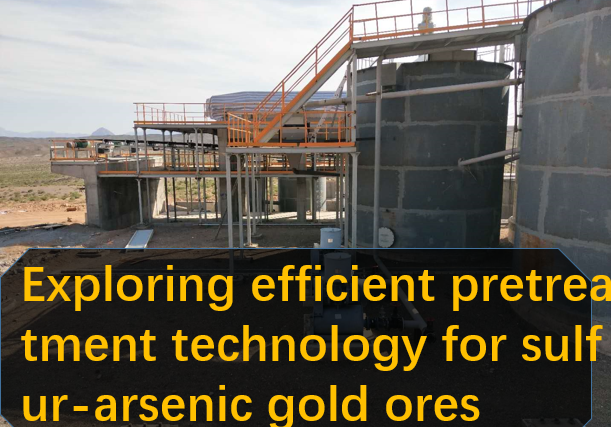Sulfur-arsenic gold ores are a large category of difficult-to-treat gold resources, accounting for more than one-third. With the reduction of easily-treated gold resources, the efficient use of these difficult-to-treat gold ores has become an important trend in the development of the mining industry. Pyrite and arsenopyrite, as the main gold-bearing minerals, often encapsulate gold in the form of ultrafine particles.
At present, roasting oxidation is the most commonly used pretreatment technology in industry, while pressurized heating oxidation and bacterial oxidation are also used. These methods mainly include roasting oxidation, pressurized heating oxidation, bacterial oxidation and chemical oxidation.
Bacterial oxidation method: Due to its low investment, high recovery rate, simple process and environmental protection, bacterial oxidation started late but developed rapidly, and is known as the "green metallurgical process".

Pressurized heating oxidation method: This method has a wide range of operating parameters, fast reaction speed, no environmental pollution, and thorough removal of sulfur and arsenic. It is suitable for concentrate and raw ore processing. Under high temperature, high pressure and aerobic conditions, the metal sulfides in the ore are decomposed by adding acid or alkali to release gold and improve the cyanide leaching recovery rate. However, due to the harsh operating conditions, high requirements for equipment materials and operating technology, and high costs, its wide application is limited.
Chemical oxidation method: As a method for pretreatment of difficult-to-treat gold ores, chemical oxidation method has not yet become a mainstream method due to high equipment requirements, high reagent costs and unsatisfactory pretreatment effects.
Traditional roasting oxidation method: mature technology, low investment, low operating costs and strong adaptability. However, arsenic and sulfur will volatilize to form toxic gases under certain conditions, causing environmental pollution. In order to reduce pollution, a solidification roasting method is proposed, which uses additives such as calcium, magnesium and sodium salts to capture arsenic and sulfur oxides produced during roasting to reduce pollution.
In summary, the pretreatment technologies for difficult-to-treat gold ores have their own advantages and limitations. With the improvement of environmental protection requirements, bacterial oxidation and pressurized heating oxidation methods are valued for their environmental friendliness. In the future, the development of these technologies will play a key role in the efficient utilization of difficult-to-treat gold resources.
© 2021 Yantai KZ Mining Processing Technology & Equipment Inc.